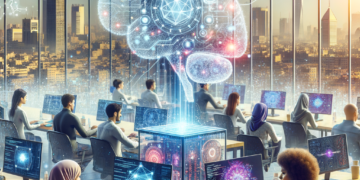Why a Fully AI-Driven Ad Agency Remains a Fantasy—And Why That’s a Good Thing In an era where artificial intelligence (AI) is rapidly transforming industries, the advertising sector is no exception. However, the idea of a fully AI-driven ad agency—one where machine intelligence solely directs strategy, creative, and execution—remains more fantasy than reality. While AI has ushered in new efficiencies and possibilities, the human element continues to be irreplaceable in the complex matrix of creative work and client relationships. Despite the hype around generative AI, experts across the industry caution against the notion that machines can completely supplant human ingenuity. Rather, AI acts as a powerful augmentation tool. One specialist in the field commented, “AI can do a lot, but true innovation comes from the messy process of teamwork and creative friction.” AI is adept at collecting and analyzing vast datasets, unlocking new consumer insights, and even generating variations of creative content—yet it struggles with nuance, empathy, and cultural context. Core challenges lie in the limits of current technology. For instance, creative campaigns frequently rely on storytelling woven from deep human truths. While AI tools can mimic tone and style, they lack the lived experience to understand cultural subtleties and shifting trends. Another industry leader noted, “At the end of the day, it’s people who interpret meaning and steer the narrative.” Beyond creativity, the successful operation of agencies involves wrestling with client personalities, aligning diverse teams, and navigating ambiguous goals—tasks that often require delicate negotiations and emotional intelligence. Machines, trained on data patterns, cannot engage at this level—at least, not yet. There is, however, broad agreement that AI can streamline workflows by tackling repetitive tasks and enhancing output speed. Automated processes in media buying, audience targeting, and stock image generation have already reduced overhead and opened room for talent to focus on strategy and ideation. The consensus across agencies is clear: the best outcomes arise when people and technology work as allies. A creative director mused, “When we spend less time fighting with software or crunching numbers, we have more space to make something truly special.” While the vision of a fully machine-run agency makes for enticing speculation, the industry’s future will likely be shaped not by a race for autonomy, but by a deeper partnership between human creativity and AI-powered efficiency. In a world full of noise, authenticity and connection remain human strengths that no algorithm can yet match. Team V.INO-LNK
The Human Touch in the Age of AI Why Fully Automated Ad Agencies Are Still a Myth
Editorial Staff
The writers' staff at GulfTagline.ae is a team of skilled journalists and industry experts specializing in advertising, public relations, and marketing campaigns across the Gulf region and beyond. With deep expertise in brand storytelling, media strategies, and corporate communications, our writers provide insightful analyses of the latest trends, successful campaigns, and emerging innovations in the world of PR and advertising.
Related Posts
Leave a Reply Cancel reply
Browse by Category

MAIN OFFICES
GulfTagline Magazine
Dubai Production City
Dubai, UAE
www.gulftagline.ae
NEWS MENU
TRENDS-INTERVIEWS
CAMPAIGNS-BRANDING
PR & MEDIA-BUSINESS
EVENTS-TECH AI
AGENCIES-GLOBAL
SERVICES
SUSCRIPTIONS
MEDIA PARTNERSHIP
PRESS RELEASE
SPECIAL EVENTS
CONNECT
ABOUT US
ADVERTISE WITH US
CONNECT













